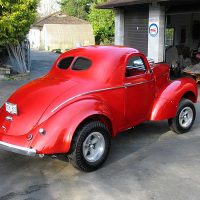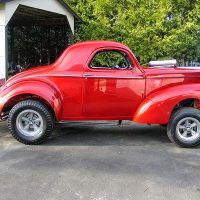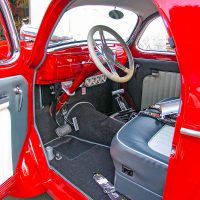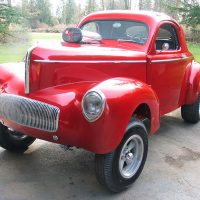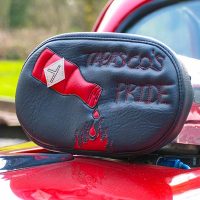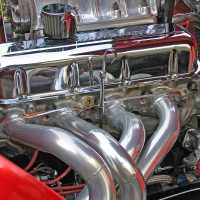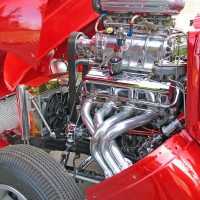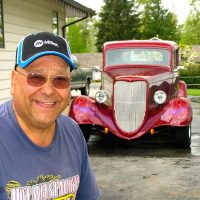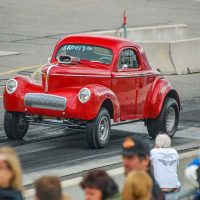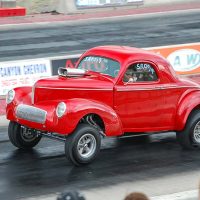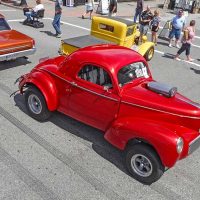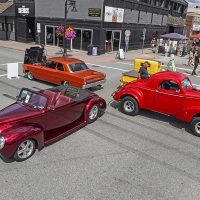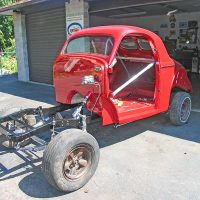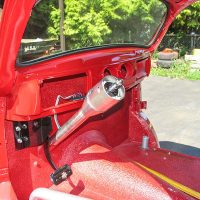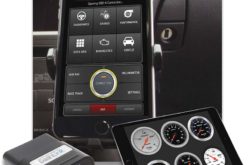Story and photos by Cam Hutchins

The 1942 model production was cut short due to World War II, but the Willys General Purpose vehicle, the Jeep, saved Willys Overland. Willys Gasser-style drag cars have been a favourite of Hot Rodders and racers for a long time. With many still seen regularly at drag strips and car shows all over, one might get the impression that they built tons of them. In 1941, Ford built more coupes alone than double the 1941 Willys total production of just 22,000, including four-door sedans and station wagons. The Name “Americar” was only used in 1941 and 1942. The Americar was powered by a Willys “Go-Devil” 134 cu. in. engine that turned out to be the automaker’s greatest asset. A modified version of this engine was used in the WWII Jeeps.
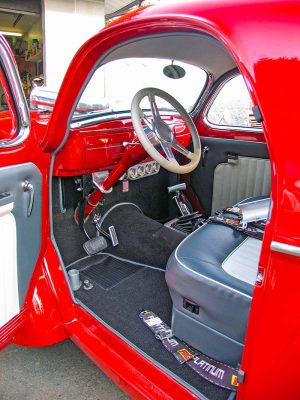
The Willys “Find” story goes like this. Bruce Anderson in Prince George buys a really great 1941 Willys Three-Window Coupe out of Tacoma. He finds a fibreglass front end and sticks it on, then loses interest. Gord tries to buy it but some lucky guy on Vancouver Island scoops him. Lucky for Gord, the lucky guy runs out of luck and is short for cash. So after only owning the car a couple of weeks, he sells it to a very lucky Gord! Linda is lucky too; she won a trip from A&W to go to the Barrett-Jackson auction one year, and a private A&W car show for them and all their carnut friends, which is lots!
When the car arrives at Gord’s incredibly well-equipped shop behind his house, the body is in fantastic shape. The amazing body and paint guy, Bodo Reichert, takes a liking to it. Maybe because Bodo loves painting cars, and is very meticulous. So any car that does not need more than a light sanding before he gets to spray it, is a real gem! Bodo’s incredible skill also paid off in the car’s final colour. Bodo is the one who came up with the “Hot Inferno Red” colour after helping Gord and Linda pour over lots of samples.
The car was to be built as a Gasser style but equally suited for street or strip. One can only have so many stock cars, so the Willys was stripped down and gotten ready for a specially-built 454. Gord had the mill from who knows where…”just sitting around, I guess” says Gord. They bored it out to 468 cu. in. and topped it with a 6-71 blower and dual quad Holley 650 carbs. A TH400 Automatic trans with B&N shifter was built to handle the power, but still be drivable. This is perfect, as the car was only to be raced a few times a year, but street driven every Friday night during cruise season!
Once again, lots of friends helped out, including Darrell Brulotte who was going to be the guy who raced the beast on the track, and helped do pretty much everything. Starting up front with the first part of making a “Gasser,” is the front straight axle with leaf springs. Out back is a 12-bolt posi rear end with 4.10 gears and coilover shocks to help keep the rear end hooking up on the track. The frame got some strengthening but they are pretty stout from the factory.
A roll cage was installed with removable side bars and the battery was relocated to the trunk, like a proper race car. But unlike a proper race car, the trunk was fully upholstered! Al Decker of Bitchin Stitchin’ came by and did most of the interior work right in Gord’s garage. The bench seat is the original that came with the car, but was newly upholstered. The car has an aftermarket Stewart Warner speedometer and tach mounted in the centre of the dash, just like the stock Willys placement for the original speedometers. Auto Meter gauges sit under the dash to keep all systems in check. There is even a tilt steering column, again from Gord’s vast stockpile of good parts.
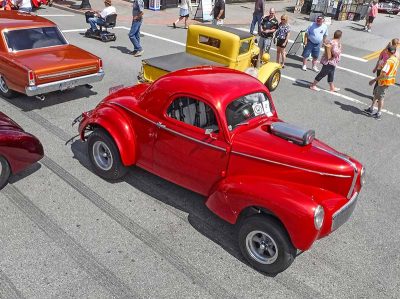
The proof is in the pudding or the time slips at the track. This car consistently ran high 10’s or low 11’s and it looked damn good doing it. One of its first shows was the Goodguys First North West Nostalgic Drags in 2005, where it won most Nostalgic Race Car! The car was even on the BCHRA’s car show t-shirts for the Club’s 50th and 60th anniversaries and consistently turns heads whenever it drives by with its low menacing exhaust burble. That is what lucky sounds like!





